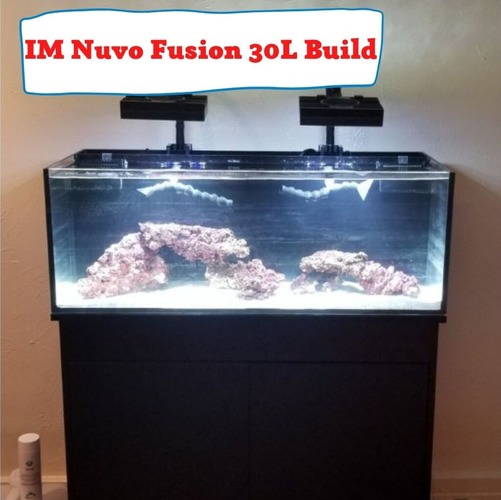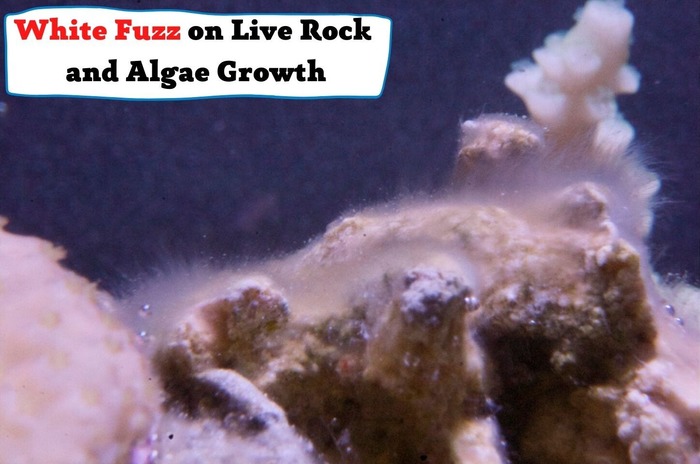Aquarium enthusiasts often strive to maintain a healthy and balanced environment for their aquatic pets. One of the essential parameters they monitor is the level of nitrite and ammonia in the aquarium water. These two compounds are toxic to fish and other aquatic animals, and high levels can lead to illness or death.
However, sometimes, aquarium owners may encounter an unusual situation where the nitrite levels are high, but ammonia levels are low or non-existent. In this article, we will discuss the possible reasons behind this phenomenon and the steps you can take to address it.

Nitrite and Ammonia in Aquariums
Before we dive into the possible reasons for high nitrite and no ammonia in an aquarium, let’s first understand what nitrite and ammonia are and how they affect aquatic life.
Ammonia is a toxic compound that is produced by the breakdown of fish waste, uneaten food, and other organic matter in the aquarium. In a healthy and balanced aquarium, beneficial bacteria called Nitrosomonas convert the toxic ammonia into nitrite, which is also toxic to fish and other aquatic animals. Another type of beneficial bacteria called Nitrobacter then converts the nitrite into nitrate, which is less harmful and can be removed through regular water changes.
High Nitrite and No Ammonia: The Possible Reasons
Now let’s discuss some of the possible reasons behind high nitrite and no ammonia in aquariums.
1) Insufficient biological filtration
In a well-established aquarium, the Nitrosomonas and Nitrobacter bacteria play a crucial role in converting ammonia to nitrite and then to nitrate. If the biological filtration is not sufficient or disrupted, the conversion process may not occur correctly, leading to a buildup of nitrite. In this case, the ammonia levels may be low or non-existent, indicating that the Nitrosomonas bacteria are not adequately breaking down the ammonia.
2) Overfeeding
Overfeeding your fish can lead to excess organic matter in the aquarium, which can contribute to an increase in nitrite levels. If the Nitrosomonas bacteria cannot convert the excess ammonia into nitrite quickly enough, the nitrite levels may rise.
3) Medication use
Some medications used in aquariums, such as antibiotics, can disrupt the beneficial bacteria’s growth and function, leading to an increase in nitrite levels.
4) New tank syndrome
If you have recently set up a new aquarium, you may encounter high nitrite levels and no ammonia. This condition is known as new tank syndrome, and it occurs because the beneficial bacteria have not yet established themselves in the aquarium. In this case, you may need to cycle the aquarium properly to allow the bacteria to grow and convert the ammonia to nitrite and nitrate.
Is High Nitrite Level Too Bad for Aquariums?
Yes, a high nitrite level can be very harmful to aquariums and its inhabitants. Nitrite is a toxic compound that can cause stress, illness, and even death in fish and other aquatic animals. Nitrite interferes with the oxygen-carrying capacity of fish blood, leading to respiratory distress, and can also damage the gills, liver, and other internal organs.
The toxicity of nitrite is dose-dependent, which means that the higher the nitrite level, the more harmful it is to aquatic life. Generally, nitrite levels should be kept below 0.5 mg/L, with ideally zero nitrite detectable in aquarium water.
If the nitrite levels remain high for an extended period, it can lead to a condition known as nitrite poisoning or nitrite toxicity, which can have serious consequences for the aquarium’s inhabitants. Symptoms of nitrite poisoning include lethargy, gasping for air at the water’s surface, red or inflamed gills, and loss of appetite. If left untreated, nitrite poisoning can be fatal to fish and other aquatic animals.
Therefore, it is essential to monitor nitrite levels regularly, especially in new or heavily stocked aquariums, and take appropriate action if the nitrite levels rise above the recommended levels. Regular water changes, proper filtration, and careful feeding practices can help prevent nitrite buildup and maintain a healthy and safe aquarium environment for your aquatic pets.
Is Low Level of Ammonia Bad for Aquarium?
A low level of ammonia in an aquarium is not necessarily bad. In fact, it is generally desirable to have low or undetectable levels of ammonia in aquarium water.
Ammonia is a toxic compound that can cause stress, illness, and even death in fish and other aquatic animals. It is produced by the breakdown of fish waste, uneaten food, and other organic matter in the aquarium. In a healthy and balanced aquarium, beneficial bacteria called Nitrosomonas convert the toxic ammonia into nitrite, which is also toxic to fish and other aquatic animals. Another type of beneficial bacteria called Nitrobacter then converts the nitrite into nitrate, which is less harmful and can be removed through regular water changes.
If the ammonia levels in the aquarium are high, it can lead to an increase in nitrite levels, which are also toxic. Therefore, it is crucial to keep the ammonia levels low by removing uneaten food, fish waste, and other organic matter from the aquarium regularly, and by providing adequate biological filtration to allow the Nitrosomonas bacteria to convert the ammonia into nitrite.
In summary, while low levels of ammonia are not harmful, it is still important to maintain a clean and healthy aquarium environment by regularly monitoring and maintaining proper water parameters, including ammonia, nitrite, and nitrate levels.
Do Different Aquarium Fish Require Various Nitrite and Ammonia Levels?
Different aquarium fish have varying tolerance levels for nitrite and ammonia, and their needs can differ depending on their species, size, and individual requirements.
In general, all fish are sensitive to high levels of nitrite and ammonia, and it is essential to keep these levels as low as possible to maintain a healthy and safe aquarium environment for all fish and other aquatic animals.
However, some fish are more sensitive to these toxins than others, and some species can tolerate higher levels of nitrite and ammonia than others. For example, some species of fish from the Amazon Basin have evolved to live in acidic and oxygen-poor water conditions, and they may have a higher tolerance for ammonia and nitrite than other fish.
It is important to research the specific requirements and tolerances of the fish species you plan to keep in your aquarium and adjust the water parameters accordingly. Some fish may require lower nitrite and ammonia levels than others, and it is essential to maintain the appropriate levels to prevent stress and illness in your fish.
Additionally, it is important to note that even if a fish species can tolerate higher levels of nitrite and ammonia, it is still best to maintain low levels to promote optimal health and well-being for your fish. Regular water changes, proper filtration, and careful feeding practices can help maintain the appropriate water parameters for your fish and create a healthy and thriving aquarium environment.
What to Do About High Nitrite and No Ammonia
If you encounter high nitrite levels and no ammonia in your aquarium, you should take steps to address the issue promptly. Here are some tips to consider:
- Perform a water change: A partial water change can help dilute the nitrite levels and reduce the stress on your fish and other aquatic animals.
- Check your filtration: Ensure that your biological filtration system is functioning correctly, and the beneficial bacteria are growing and thriving.
- Reduce feeding: Overfeeding can contribute to high nitrite levels, so it is crucial to feed your fish appropriately.
- Avoid medication use: Use medications only when necessary and follow the manufacturer’s instructions carefully.
- Cycle the aquarium properly: If you have a new aquarium, you may need to cycle it properly to allow the beneficial bacteria to grow and establish themselves.
Quick Solution for Nitrite Spikes in Your Aquarium
A nitrite spike in an aquarium can be a serious issue, but there are some quick solutions that can help address the problem.
One of the easiest and most effective ways to lower nitrite levels in an aquarium is to perform a partial water change. This will dilute the nitrite concentration in the water, reducing its toxic effects on fish and other aquatic animals. It is recommended to change 25% to 50% of the aquarium water, depending on the severity of the nitrite spike.
Nitrite is toxic to fish because it interferes with the oxygen-carrying capacity of fish blood. Increasing aeration in the aquarium can help boost oxygen levels in the water, which can help alleviate the effects of nitrite toxicity. You can increase aeration by adding air stones, powerheads, or increasing water surface agitation.
Fish waste and uneaten food are significant contributors to nitrite levels in aquarium water. Stopping feeding for a day or two can help reduce the organic matter in the aquarium, giving beneficial bacteria a chance to catch up and convert the nitrite to nitrate.
Adding beneficial bacteria to the aquarium can help speed up the conversion of nitrite to nitrate, reducing the toxic effects of nitrite. You can purchase commercial bacterial supplements at most pet stores or add live bacteria cultures like Bio-Spira, which can help establish a healthy biological filter quickly.
Regularly testing the aquarium water for nitrite levels can help you catch a nitrite spike before it becomes a more significant problem. It is recommended to test the water at least once a week, or more often if necessary, to ensure that the nitrite levels remain within safe limits.
Remember, preventing nitrite spikes is much easier than fixing them. Maintaining proper feeding practices, regular water changes, and providing adequate biological filtration are essential for preventing nitrite spikes and ensuring a healthy and thriving aquarium environment for your fish and other aquatic animals.
Conclusion
Maintaining a healthy and balanced aquarium requires careful monitoring of water parameters such as nitrite and ammonia levels. If you encounter high nitrite and no ammonia in your aquarium, it is essential to identify the root.
- High Nitrite and No Ammonia in Aquarium: What Are the Reasons? - May 2, 2023
- Mystery Snail Shell Peeling – What’s Wrong with Your Pet? - September 26, 2022
- What is Wen on Goldfish? Investigating The Fish with the Hood - June 20, 2022




